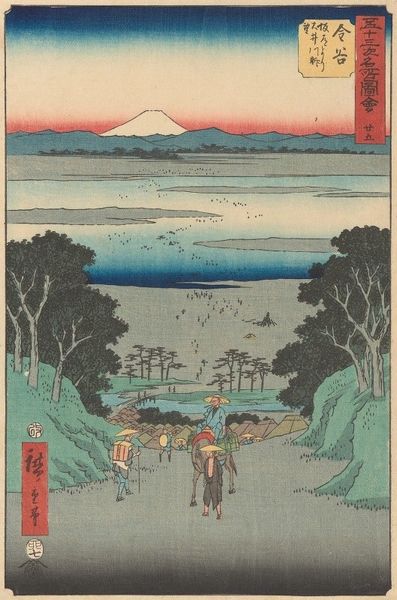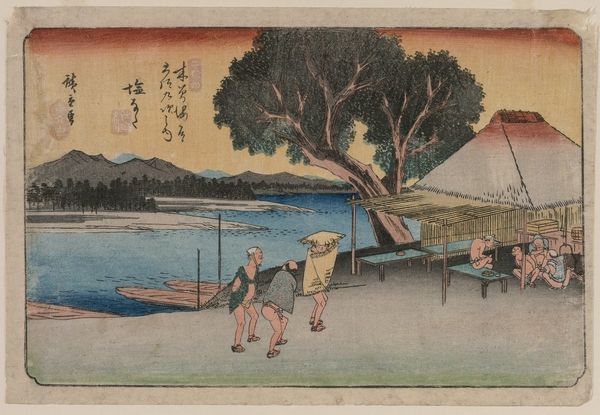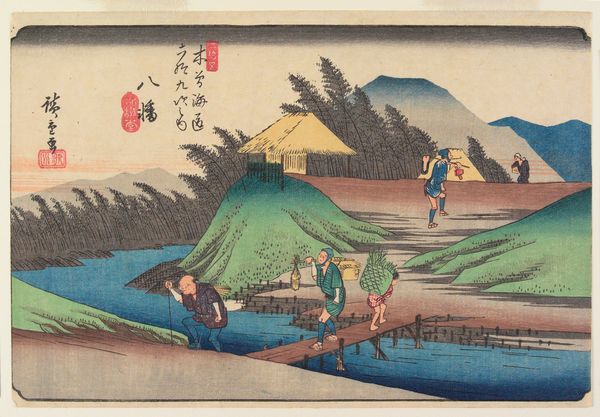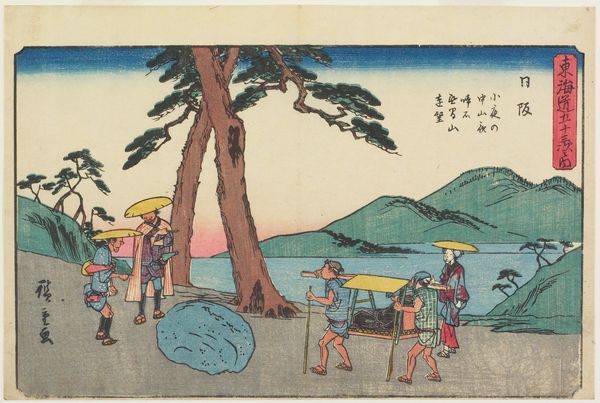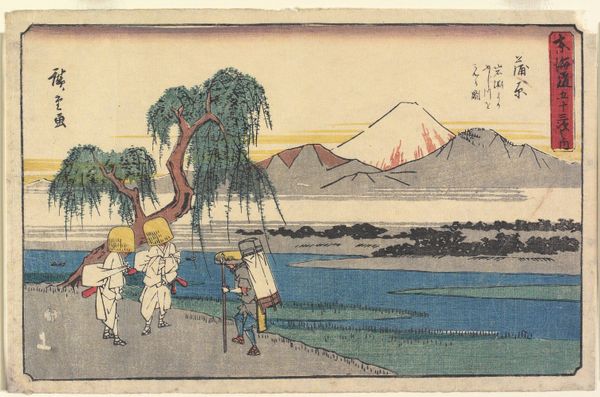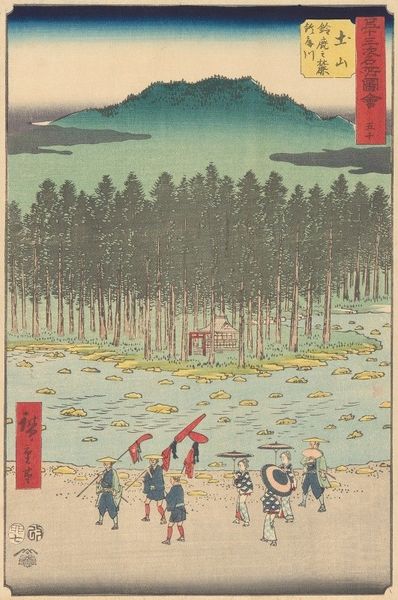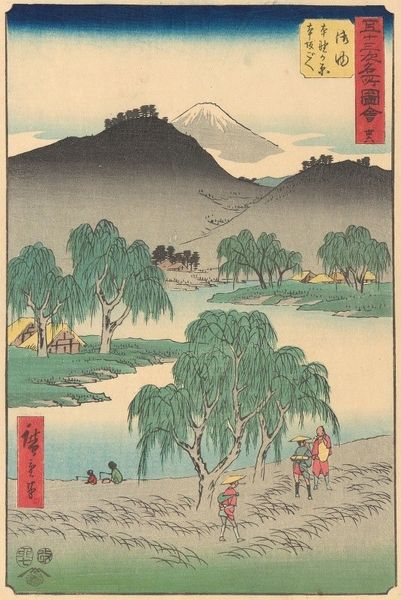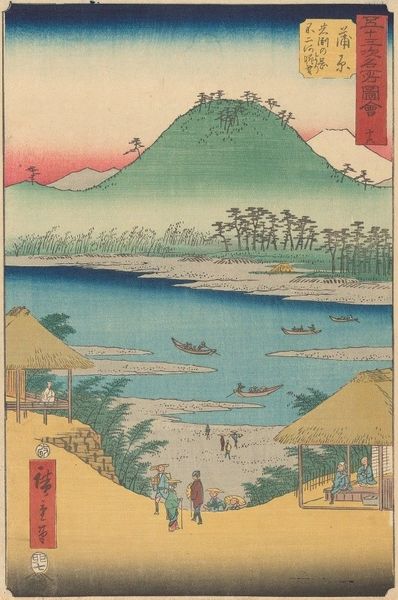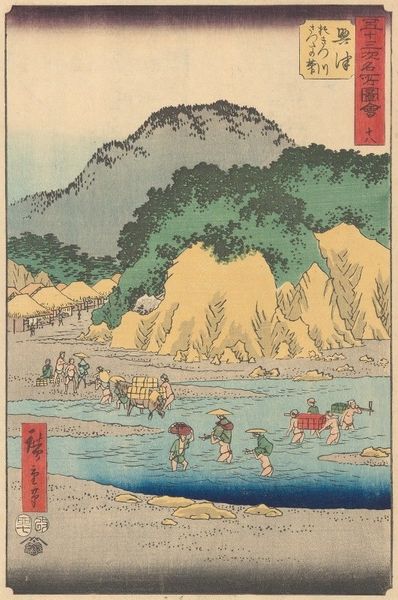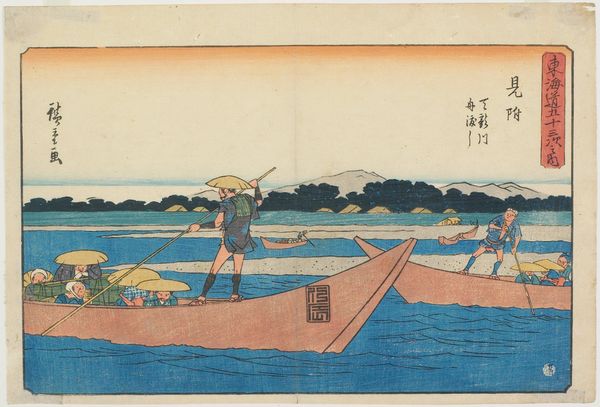
print, woodblock-print
# print
#
asian-art
#
landscape
#
ukiyo-e
#
woodblock-print
Copyright: Public Domain: Artvee
Editor: We’re looking at “Hiratsuka,” a woodblock print by Utagawa Hiroshige, made around 1841-1842. What immediately strikes me is the focus on labor – the heavily laden horse, the resting porters. What's your take? Curator: It's precisely that focus that interests me. Consider the woodblock print itself: a mass-producible item, a commodity circulating within a burgeoning consumer culture. The "high art" landscape becomes intertwined with the material conditions of its production and distribution. How does the inherent accessibility of the medium, compared to, say, painting, affect its reception? Editor: That’s a great point! So the medium itself is almost commenting on labor and consumption through its production. How did that inform the ukiyo-e style? Curator: Absolutely! Ukiyo-e, meaning "pictures of the floating world," often depicts everyday life, blurring the line between fine art and popular culture. Examine the materials themselves: the wood, the pigments, the paper. These aren't precious materials reserved for the elite. Their relative affordability and availability contribute to the democratization of art, making it accessible to a wider audience and facilitating distribution. Does seeing it this way change how you look at other art too? Editor: It does! I’d never really thought about the socio-economic impact of *how* art is made as much as *why*. It makes you rethink what "valuable" really means. Curator: Precisely. The value shifts from mere aesthetic contemplation to an understanding of the complex relationships between artistic creation, material production, and social consumption. Editor: Thinking about how many prints Hiroshige must have produced – it highlights a different aspect of the artist's labor. Thanks for shifting my perspective. Curator: And thank you for prompting such insightful observations. The point is not just what we see but understanding *how* we see, conditioned by the art object's existence as a material product.
Comments
No comments
Be the first to comment and join the conversation on the ultimate creative platform.
